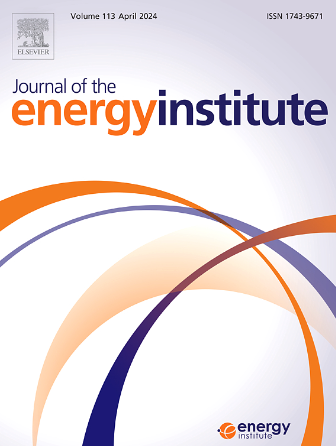Conventional and unconventional gas emissions and particle matter emissions of methanol CI engine with different EHN addition and compression ratios
IF 5.6
2区 工程技术
Q2 ENERGY & FUELS
引用次数: 0
Abstract
Methanol, as a carbon-neutral resource, exhibits significant potential in the automotive sector, but its fuel characteristics are not easily compression ignited. In this experimental study, various strategies such as the preheating of the intake charge, augmentation of the compression ratio, and the introduction of 2-ethylhexyl nitrate (EHN) as an additive were implemented to enhance the combustion stability of pure methanol. In this study, an investigation was conducted on the combustion, fuel economy, and emission characteristics of pure methanol in a heavy-duty diesel engine. The experimental results revealed that the compression ratio of 21.5:1 had a more significant effect in reducing the ignition delay and combustion duration than the addition of 7 % EHN. Further, the compression ratio of 21.5:1 also improved brake thermal efficiency (BTE) by 4 %–11.9 %. In terms of emissions, with the addition of EHN in methanol under the lower compression ratio, NO and methanol emissions were higher. The peak particulate concentration and size of methanol gradually increased with load increasing. The incorporation of EHN resulted in an elevation in both the concentration and size, but still lower than those of diesel fuel. Based on the synergistic optimization of compression ratio and EHN addition ratio, the intake temperature required for achieving stable combustion was reduced, from 290 °C down to 70 °C, which was basically equivalent to 50 °C for diesel. The peak BTE of 30.19 % was achieved under the compression ratio of 21.5:1 and with the addition of 3 % EHN. This represented an 8.29 % improvement compared to the BTE of diesel fuel at the speed of 1144 rpm and the BMEP of 0.22 MPa. Thus, the pure methanol compression-ignition engine can reach the higher-efficiency, clean, and stable operation based on higher compression ratio (21.5:1) and low-ratio EHN addition (3 %), with a relatively normal intake temperature (70 °C).
求助全文
约1分钟内获得全文
求助全文
来源期刊

Journal of The Energy Institute
工程技术-能源与燃料
CiteScore
10.60
自引率
5.30%
发文量
166
审稿时长
16 days
期刊介绍:
The Journal of the Energy Institute provides peer reviewed coverage of original high quality research on energy, engineering and technology.The coverage is broad and the main areas of interest include:
Combustion engineering and associated technologies; process heating; power generation; engines and propulsion; emissions and environmental pollution control; clean coal technologies; carbon abatement technologies
Emissions and environmental pollution control; safety and hazards;
Clean coal technologies; carbon abatement technologies, including carbon capture and storage, CCS;
Petroleum engineering and fuel quality, including storage and transport
Alternative energy sources; biomass utilisation and biomass conversion technologies; energy from waste, incineration and recycling
Energy conversion, energy recovery and energy efficiency; space heating, fuel cells, heat pumps and cooling systems
Energy storage
The journal''s coverage reflects changes in energy technology that result from the transition to more efficient energy production and end use together with reduced carbon emission.
 求助内容:
求助内容: 应助结果提醒方式:
应助结果提醒方式:


